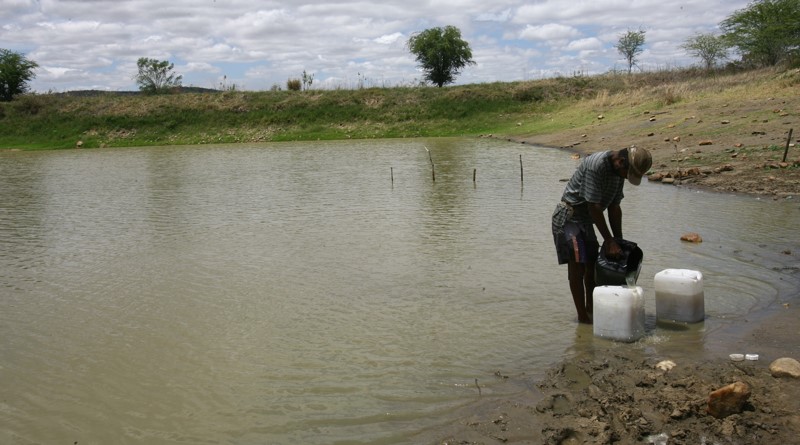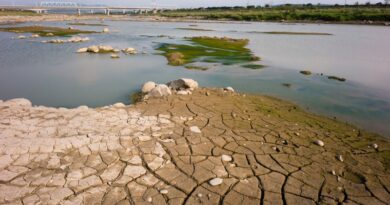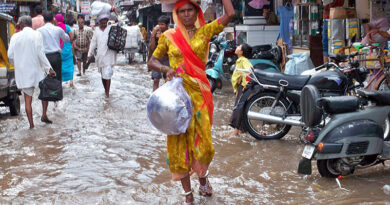West Bengal has maximum water bodies; majority across India privately-owned: Census

West Bengal has the distinction of having the highest number of water bodies in India and the state also has the maximum privately-owned water bodies as well as the most number of water bodies in urban areas, the first ever census of water bodies across the country conducted by the Union Jal Shakti Ministry has revealed.
According to the census, 24,24,540 water bodies have been enumerated in the country, out of which 97.1 per cent, or 23,55,055 water bodies, are in rural areas and just 2.9 per cent, or 69,485, are in urban areas.
The top five states in terms of number of water bodies in urban areas are West Bengal, Tamil Nadu, Kerala, Uttar Pradesh and Tripura. Across rural areas, the top five states are West Bengal, Uttar Pradesh, Andhra Pradesh, Odisha and Assam.
The census, which provides a comprehensive inventory of India’s water resources, found that 59.5 per cent of water bodies are ponds, followed by tanks (15.7 per cent), reservoirs (12.1 per cent), water conservation schemes/percolation tanks/check dams (9.3 per cent), lakes (0.9 per cent) and other bodies (2.5 per cent).
West Bengal tops the list with the highest number of ponds and reservoirs too while Andhra Pradesh was found to have the highest number of tanks. The highest number of lakes were found in Tamil Nadu.
An official statement said 55.2 per cent of all of water bodies are owned by private entities whereas 44.8 per cent of water bodies are in the domain of public ownership. Out of all public owned water bodies, maximum water bodies are owned by Panchayats, followed by state srrigation/state WRD.
Out of all private owned water bodies, maximum water bodies are in hands of individual owner/farmer followed by group of individuals and other private bodies.
The top states which lead in the private owned water bodies are West Bengal, Assam, Andhra Pradesh, Odisha and Jharkhand while top five states wherein major use of water bodies is in pisciculture are West Bengal, Assam, Odisha, Uttar Pradesh and Andhra Pradesh. Top 05 States wherein major use of water bodies is in irrigation are Jharkhand, Andhra Pradesh, Telangana, West Bengal and Gujarat.
Out of all ‘in use’ water bodies, major water bodies are reported to be used in pisciculture followed by irrigation. The census found that 78 per cent water bodies are man-made water bodies, whereas 22 per cent are natural water bodies. Just 38,496 water bodies, or 1.6 per cent, out of all the enumerated water bodies are reported to be encroached, out of which 95.4 per cent are in rural areas and remaining 4.6 per cent in urban areas.
The census also found that in respect of 23,37,638 water bodies, 72.4 per cent had water spread area less than 0.5 hectare while 13.4 per cent had water spread area between 0.5-1 hectare, 11.1 per cent had water spread area between 1-5 hectares and remaining 3.1 per cent of water bodies had water spread area more than 5 hectares.
Of all water bodies, the census found 83.7 percent of bodies to be in use for pisciculture, irrigation, groundwater recharge, and domestic/drinking purposes. The remaining 16.3 per cent were not in use due to drying up, construction, siltation, destruction, salinity, or other reasons.
According to the census, 9.6 per cent (2,32,637) water bodies are located in tribal areas, 8.8 per cent (2,13,454) in flood prone areas, 7.2 per cent
(1,74,592) in the area under “Drought Prone Areas Programme”, two per cent (49,470) water bodies are in the naxal affected areas, 0.7 per cent (16,018) under Desert Development Programme (DDP) whereas remaining 71.7 per cent (17,38,369) water bodies are located in other areas.
On the issue of number of cities benefitted by water bodies, the census found that out of all in use water bodies, 88.6 per cent (17,98,349) water bodies are benefitting one city/town/village while 10.6 per cent (2,15,516) water bodies are benefitting two-five cities/towns/villages whereas just 0.8 per cent (16,175) water bodies are benefitting more than five cities/ towns/ villages.
The census provides a comprehensive inventory of India’s water resources, including natural and man-made water bodies like ponds, tanks, lakes, and more, and to collect data on the encroachment of water bodies. The census also highlighted disparities between rural and urban areas and varying levels of encroachment and revealed crucial insights into the country’s water resources.
The census was launched under the centrally sponsored scheme ‘Irrigation Census’ in convergence with the 6th Minor Irrigation Census in order to have a comprehensive national database of all water bodies.



